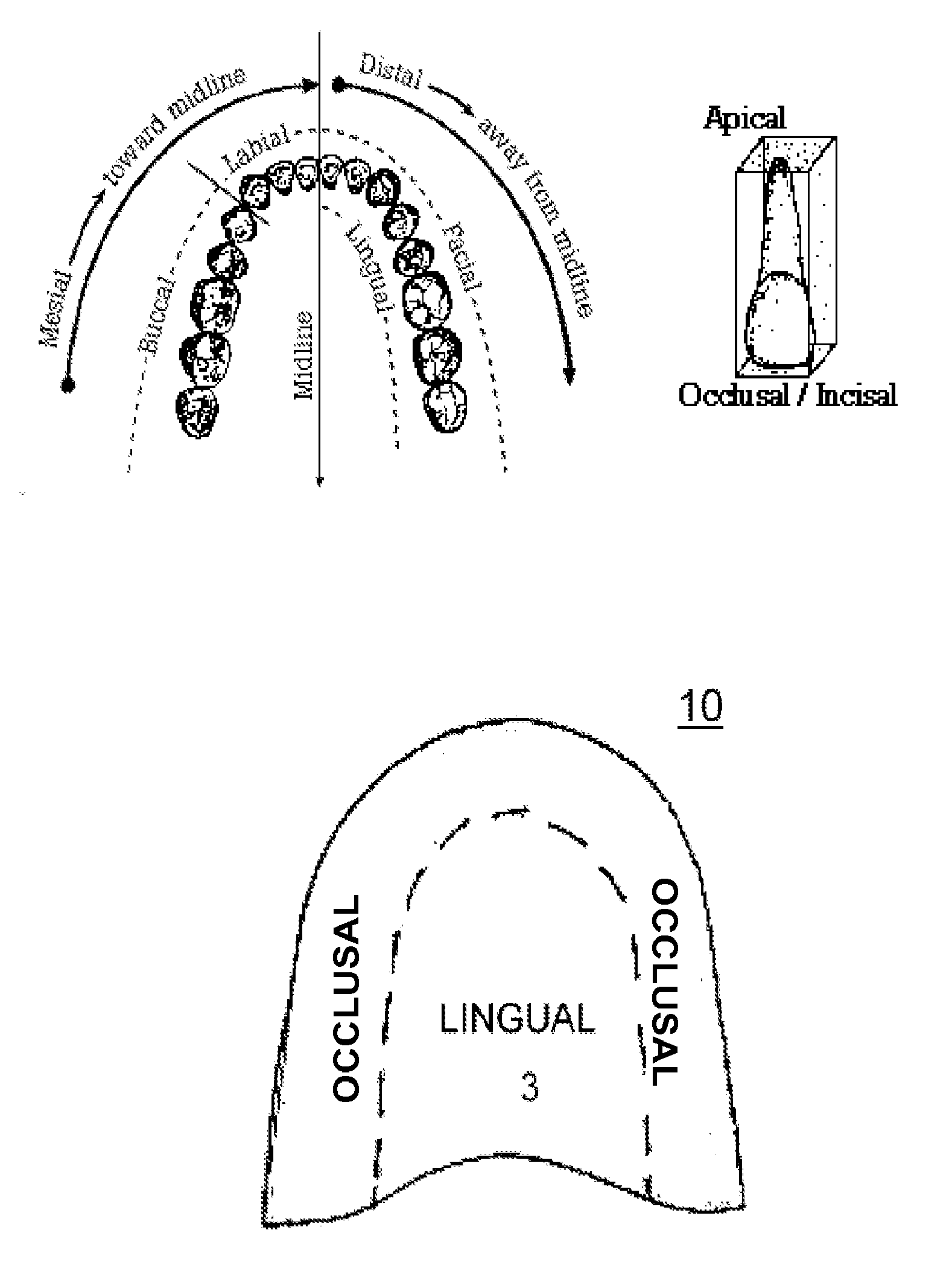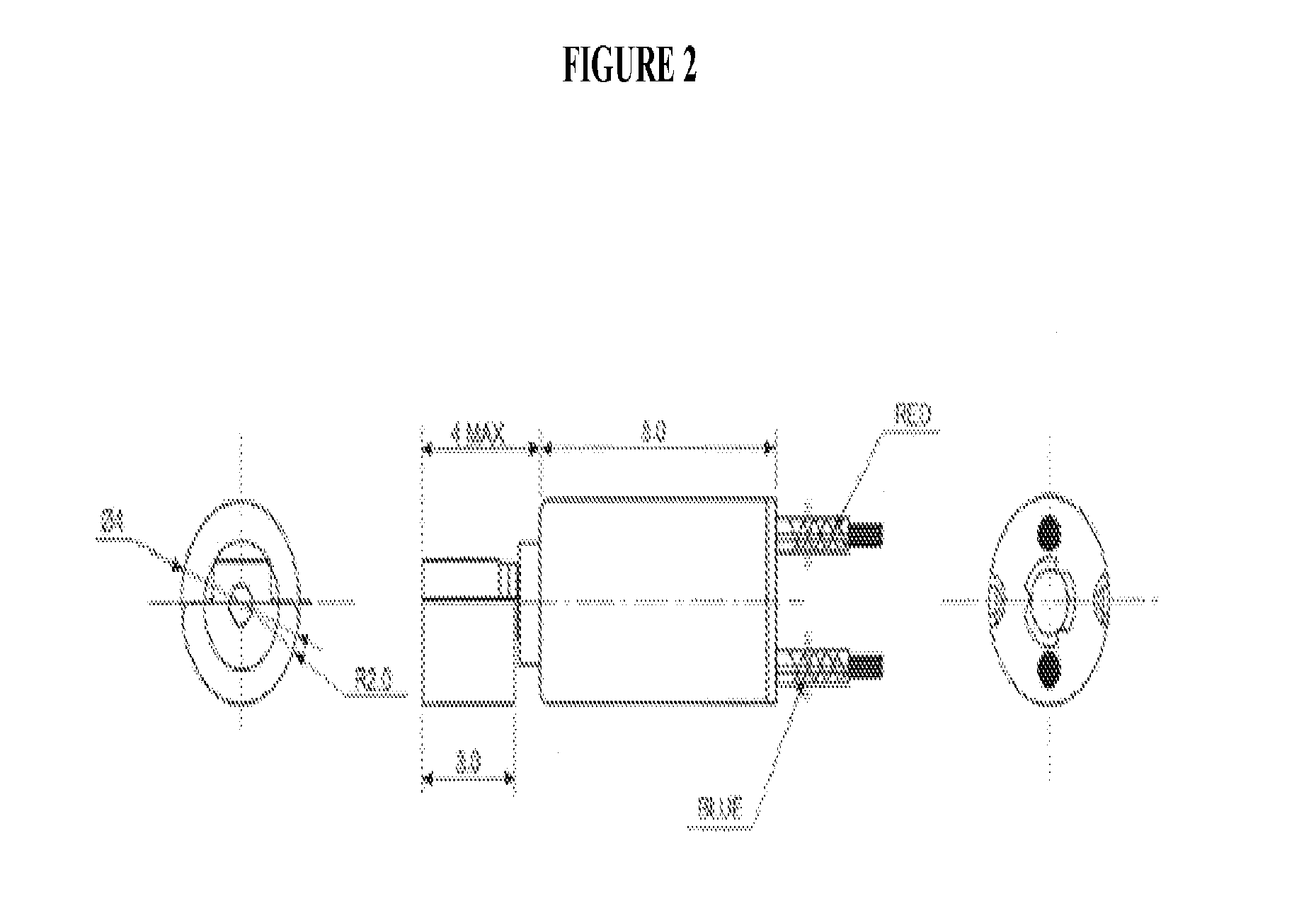Differential Vibratation Of Dental Plate
a differential vibrating and dental plate technology, applied in dental surgery, dental tools, medical science, etc., can solve the problems of cumbersome devices, high cost, and cumbersome design and construction, and achieve the effect of reducing cost and simplifying design and manufactur
- Summary
- Abstract
- Description
- Claims
- Application Information
AI Technical Summary
Benefits of technology
Problems solved by technology
Method used
Image
Examples
example 1
Differential Vibrational Dental Plate
[0044]FIG. 1 shows one embodiment of a differential vibration dental plate 10. The device 10 has an intraoral bite plate 3 that lingually shaped for insertion into a patient's mouth. Inside the bite plate 3 are tiny vibration motors (A-L) situated to contact the various tooth zones. Alternatively, a continuous piezoelectric motor can differentially apply vibrational force to the various zones.
[0045]The device 10 is clamped down by the patient's jaw on the bite plate 3 to secure it between the dental arches. The vibration sources A-L in this embodiment are activated by pushing a button (not shown) on the bite plate, or alternatively can be activated by patient bite pressure thus closing the relevant circuit.
[0046]The bite plate is covered with a polymeric molded coating (not shown) or housing (not shown) in order to hermetically seal the motors. An access valve (not shown) can provide access for replacement of the batter (P).
[0047]Using a continuo...
example 2
Customizable Differential Vibrational Dental Plate
[0050]The embodiment described in Example 1 has vibration motors at all quadrants of the bite plate, and relies on differential programming or activation to achieve differential vibration. However, this embodiment has two disadvantages, namely, cost increases because each vibration motor and the associated circuitry contribute to cost. Secondly, since the bite plate covers all of the teeth, there is some transmission of vibration from the activated motors to other teeth. This embodiment solves these two difficulties by having a universal dental guide as opposed to dental plate, that is a U-shaped wire or band that fits on the facial surface of the teeth, and to which one or more vibration motors can be placed and affixed at the desired location (see FIG. 2B).
[0051]Preferably the dental guide is made of metal or other slightly deformable material, so that the curvature of the dental guide can be adjusted for each patient. However, if ...
PUM
 Login to View More
Login to View More Abstract
Description
Claims
Application Information
 Login to View More
Login to View More - R&D
- Intellectual Property
- Life Sciences
- Materials
- Tech Scout
- Unparalleled Data Quality
- Higher Quality Content
- 60% Fewer Hallucinations
Browse by: Latest US Patents, China's latest patents, Technical Efficacy Thesaurus, Application Domain, Technology Topic, Popular Technical Reports.
© 2025 PatSnap. All rights reserved.Legal|Privacy policy|Modern Slavery Act Transparency Statement|Sitemap|About US| Contact US: help@patsnap.com



